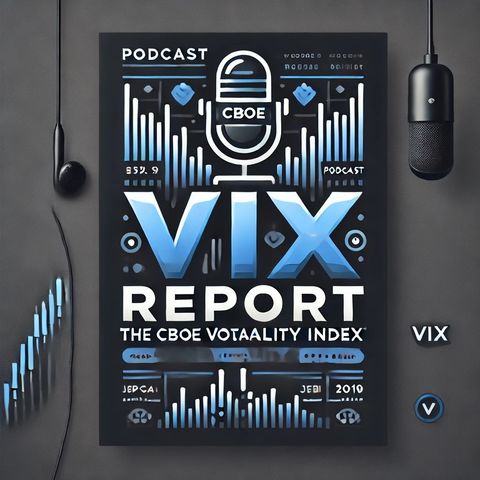"Navigating Market Volatility: Decoding the VIX Index for Insightful Investment Decisions"

Scarica e ascolta ovunque
Scarica i tuoi episodi preferiti e goditi l'ascolto, ovunque tu sia! Iscriviti o accedi ora per ascoltare offline.
"Navigating Market Volatility: Decoding the VIX Index for Insightful Investment Decisions"
Questa è una trascrizione generata automaticamente. Si prega di notare che non è garantita la completa accuratezza.
Descrizione
The Cboe Volatility Index (VIX), often referred to as the "fear index," serves as a crucial barometer of market sentiment, reflecting investor expectations of future volatility over the next 30...
mostra di più### Current VIX Index Values
To determine the current "sale price" and "percent change" of the VIX Index, one must consult the real-time data available on the Cboe VIX Index Dashboard. The current price on this dashboard indicates the market's consensus view of expected volatility. The percent change is derived from the difference between the current price and the previous closing price, shedding light on whether market volatility expectations have risen or declined.
### Underlying Factors and Trends
The fluctuation of the VIX Index is influenced by various underlying factors:
- **Market Sentiment**: A hike in the VIX suggests increased investor apprehension and higher expected volatility, while a decline points to greater confidence and lower expected volatility.
- **Economic Indicators**: Releases of key economic data such as GDP growth rates, inflation, and employment figures play a significant role in shaping market volatility expectations.
- **Geopolitical Events**: Significant geopolitical events, including conflicts or political shifts, can raise market uncertainty, subsequently driving the VIX higher.
- **Central Bank Actions**: Policy decisions by central banks, particularly changes in interest rates or the implementation of quantitative easing, can substantially impact market volatility.
- **Corporate Earnings and Financial Health**: The performance and financial reports of major corporations influence market sentiment, thereby affecting volatility expectations.
### Trends
The VIX Index predominantly measures short-term volatility, offering insights into market conditions expected over the subsequent 30 days. Observing short-term volatility trends through the VIX can indicate periods of anticipated higher or lower market jitters.
### Comparative Analysis for Broader Context
For a more comprehensive understanding of market volatility expectations, the VIX can be compared with other related indices such as the VIX6M (VIX 6-Month), VIX9D (VIX 9-Day), and VIX1D (VIX 1-Day). This comparison provides a broader perspective on how volatility expectations vary across different time horizons.
In conclusion, keeping a close eye on the V
Informazioni
| Autore | QP-1 |
| Organizzazione | William Corbin |
| Sito | - |
| Tag |
Copyright 2024 - Spreaker Inc. an iHeartMedia Company
